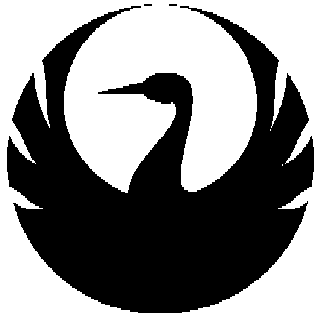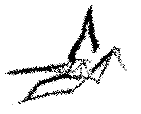| We became absorbed in parenthood during the 1980's
and over time became involved with our local Aranda Primary School through
its environment program. We worked with a teacher at the school to
design a program which promotes action as an antidote to fear. So
many students in the late 1980's were depressed by the atmosphere of doom
and gloom which the media were breeding about environmental issues.
Some of these global issues seemed just so huge that students felt powerless
and in time hopeless - they were despairing that they would even have a future.
This connected with Mark's own youthful feelings of despair in the face
of the threat of nuclear warfare.
We were determined to provide students with opportunities to act
- to engage in projects and activities that would help them to make a difference,
no matter how large the issue. This approach was tremendously successful
and the program has won many awards and received widespread recognition.
[For more information visit the School Community
Environment Program site]
In 1995 attention was focused on commemorating the 50th anniversary
of the end of World War II. Just about every major battle had its
own event, with the customary remembrance focus. But none of these
events seemed to offer any real lessons beyond a sense of human loss in
the past, and none offered a tangible sense of hope for the future.
As part of the environment program we decided to mark the 50th anniversary
of the bombing of Hiroshima on 6 August - an event which was not being
marked at all by the official Australian commemorative program. We
took the approach that this tragic event led to the birth of a peace movement
which was truly global. It galvanised people of all walks of life
into active work for peace and for a future which was free of the threat
of nuclear warfare.
Naturally, Sadako's story became the focus for our activities and
we were keen to fold paper cranes to send to Hiroshima if that was possible.
But we had a lot of trouble locating usable folding instructions and
had no idea where to send cranes if we could fold them.
Then began a new series of remarkable 'coincidences'. Firstly,
we were contacted with a request to show a Japanese visitor around the
school's environment education resources. It turned out that the
visitor, Mr Shin Yoshida, was also a peace educator with contacts in both
Hiroshima and Nagasaki and he agreed to help put us in touch with a school
in one of those places.
At this time we acquired Eleanor Coerr's book Sadako with
its beautiful pastel illustrations by Ed Young, and the associated video
from Informed Democracy, and began to discover other useful resources, including
the song 'Sadako from Hiroshima'.
Aranda Primary School held its peace ceremony on 6 August, planting
cherry blossoms in an area which it was decided would be a new community
peace garden, and singing songs about Sadako - her story was beginning
to touch a new generation of children.
In September a large envelope arrived from Hakushima Elementary School
in Hiroshima - inside were peace messages from the students, drawings and
photographs from their observance of the 50th anniversary, and step-by-step
instructions on how to fold cranes (in Japanese but very easy to follow!).
Mr Yoshida's efforts to establish a link had borne fruit.
[For more details see our pages on Peace Exchange with Hakushima]
At almost the same time Mark received an invitation to speak at a
forum in Kyoto and was able to spend a little extra time in Japan to visit
Hiroshima. In November 1995, with lots of help from Mr Yoshida, Mark
was able to visit Hakushima Elementary School, place Aranda students' cranes
at the Children's Monument and examine the Peace Memorial Museum.
Mark found the whole experience very moving and wept for the pain and suffering
which the people of Hiroshima had endured.
[Images from this visit are on our page Photographs
of Hiroshima Peace Park]
As they walked past Hiroshima castle, Mr Yoshida asked Mark why it
was so important for him to visit the Peace Park: When Mark explained
as best as he could, Mr Yoshida summed up: 'So, it is a kind of pilgrimage.'
And he was right - Mark knew the place so well from photos and books but
knew deep in his heart that I needed to go there and to see and feel it
for himself. When Mark was leaving the Aranda cranes, he felt that
he should add a message, and struggled with what to write on their wings.
His feelings suddenly made sense when he was moved to write: 'May all children
live without fear'.
Mark came away from Hiroshima emotionally exhausted but with a renewed
commitment to do whatever he could to make sure that this horror would
not happen again - to become an active worker for peace, non-violence
and tolerance.
|





